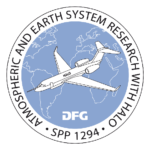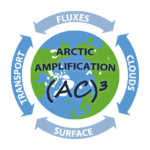Balloon-bornE moduLar Utility for profiling the lower Atmosphere – BELUGA
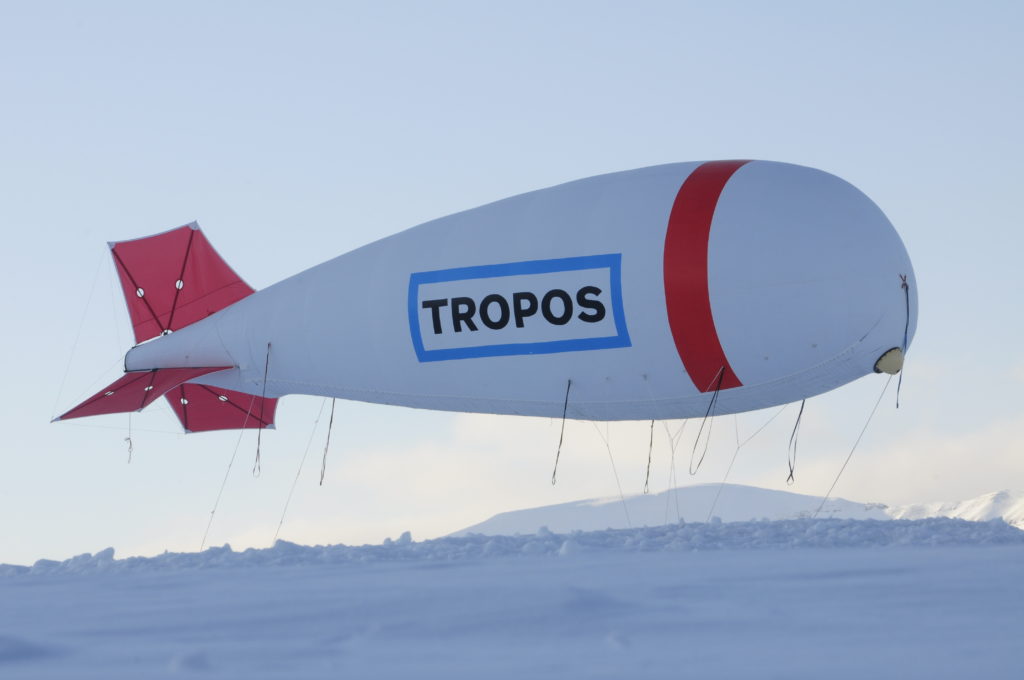
The BELUGA system is a carrier platform consisting of a 90 m³ helium-filled tethered balloon that allows to transport instrument payloads of up to 20 kg from the ground to the lower atmosphere. The tethered balloon can be operated inside clouds and under light icing conditions. The system can be equipped with a modular setup of different instrument packages to explore the Arctic boundary layer (ABL) between the surface and 1500 m altitude. The respective payloads consist of various specially designed probes and collectors for measuring turbulence (TROPOS), atmospheric radiation (University of Leipzig), cloud microphysics (University of Leipzig & TROPOS), aerosol (TROPOS), cloud water (Stockholm University in cooperation with TROPOS), particle filters (TROPOS), as well as other probes from the Alfred Wegener Institute, Helmholtz Centre for Polar and Marine Research (AWI). A cuboid aerosol box (“CAMP – Cubic Aerosol Measurement Platform”) will measure the soot content in the Arctic atmosphere. This tools make the tethered balloon an important measurement platform for studying the lower layer of the atmosphere with its deep clouds, which are said to be so important for the warming in the Arctic.
Further information on the respective instrument packages and measured quantities are taken form Egerer et al., 2019 and Egerer et al., 2021:
“For operation on the tethered balloon, three instrument packages were developed: an ultrasonic anemometer package (UP, Fig. 1b), a hot-wire anemometer package (HP,
Fig. 1c), and a payload measuring solar and TIR broadband irradiances (BP, Fig. 1d).
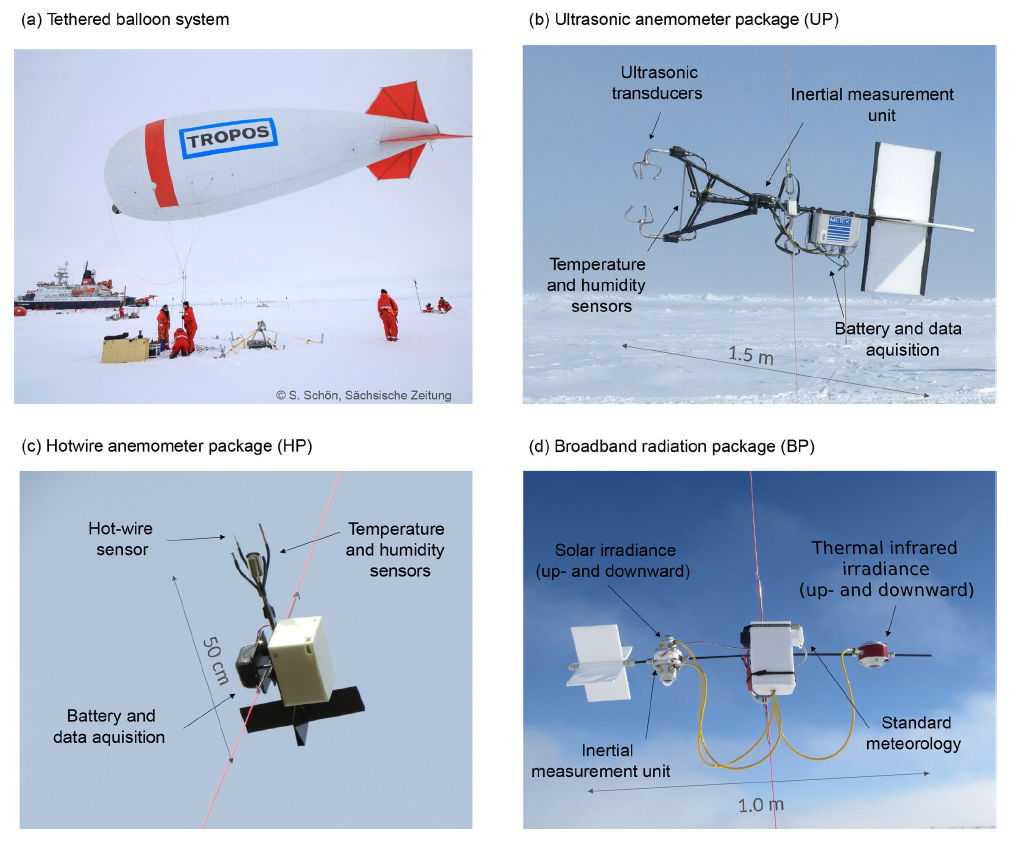
The packages are deployed in one of three main configurations, depending on the conditions and requirements for turbulence and radiation measurements that are illustrated in Figure 2.
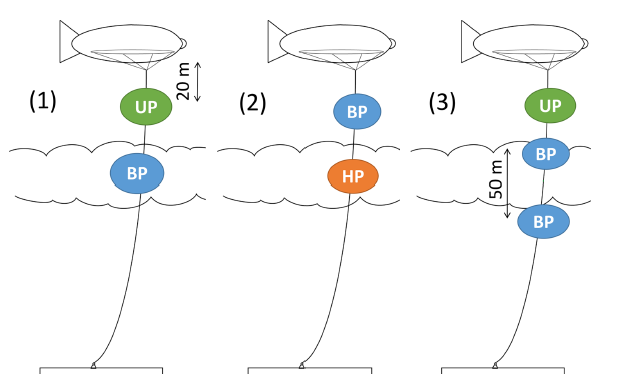
Exemplary, the Instrumentation for the UP: The fast (50 Hz resolution) ultrasonic anemometer is equipped with an inertial navigation system and fixed to the balloon tether to measure the wind velocity vector in an Earth-fixed coordinate system together with the sonic temperature. Furthermore, barometric pressure, relative humidity, and the static air temperature are measured with lower resolution (1 Hz). Relative humidity (RH) is measured with a capacitive humidity sensor. The housing of the RH sensor, which has a high diffusivity for water vapor, also accommodates a temperature sensor for the sensor-internal temperature. The air temperature is measured with a PT100 for reference and a thermocouple for temperature fluctuations (at 50 Hz).
A second instrument payload could be fixed simultaneously to the tether, e.g., measuring broadband terrestrial and solar net irradiances.
Specifications of BELUGA:
90 m³ Helium-filled balloon
12 m long, 4 m diameter
Max payload 20 kg
captured on ground with 3000 m Dyneema tether (4 mm strong)
1500 m balloon ascent with heated, electric winch
Climb and descent rates typically 1-3 ms-1
Max (laminar) wind speed 15 ms-1
For further information please visit “Research in Svalbard”: https://researchinsvalbard.no/project/9872

